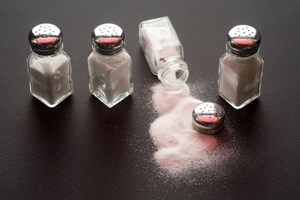 With many of us trying to keep our salt intake down (especially after these new, more restrictive, sodium guidelines were released), it’s always nice to hear that there are delicious ways to season our food without adding sodium. Now, new research shows there’s something you can do outside of the kitchen to keep sodium low: Exercise!
With many of us trying to keep our salt intake down (especially after these new, more restrictive, sodium guidelines were released), it’s always nice to hear that there are delicious ways to season our food without adding sodium. Now, new research shows there’s something you can do outside of the kitchen to keep sodium low: Exercise!
Scientists at the recent American Heart Association’s Nutrition, Physical Activity and Metabolism/Cardiovascular Disease Epidemiology and Prevention 2025 Scientific Sessions found that the more physically active you are, the less your blood pressure rises in response to a high-salt diet. Talk about good news for those who work out, and fantastic motivation for those just thinking of starting a workout plan, right?
In the study, investigators compared Chinese adults’ blood pressure on two one-week diets, one that was low in sodium (3,000 milligrams a day) and one very high in sodium (18,000 milligrams a day). As reference, the American Heart Association recommends having less than 1,500 milligrams a day of sodium. The project studied adults in rural China because the homogeneous population makes it more likely that genes influential to blood pressure were identified, according to the study.
The results? After adjusting for age and gender, the researchers found that those adults who got the most activity were the least to be affected by salt, even when consuming a very high-sodium diet. Researchers say that more research is needed, but that they expect the results to be the same in other populations. In the study, investigators also suggest that this new information should help focus public-health initiatives by specifically targeting sedentary people to reduce their salt intake.
So if you’ve been having a hard time cutting back on the salt shaker, why not try lacing up those sneakers and getting more activity in? And if you’re already active, it’s another way that your health benefits!
